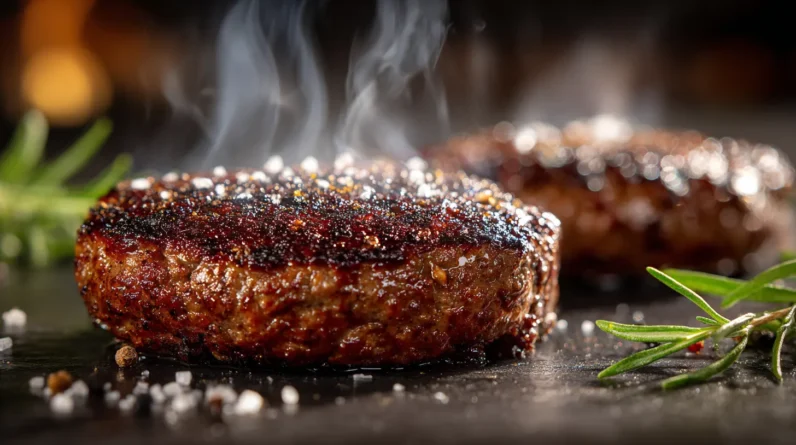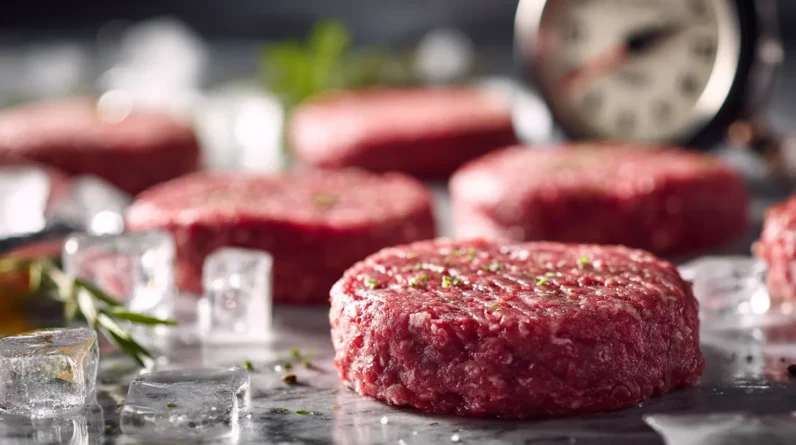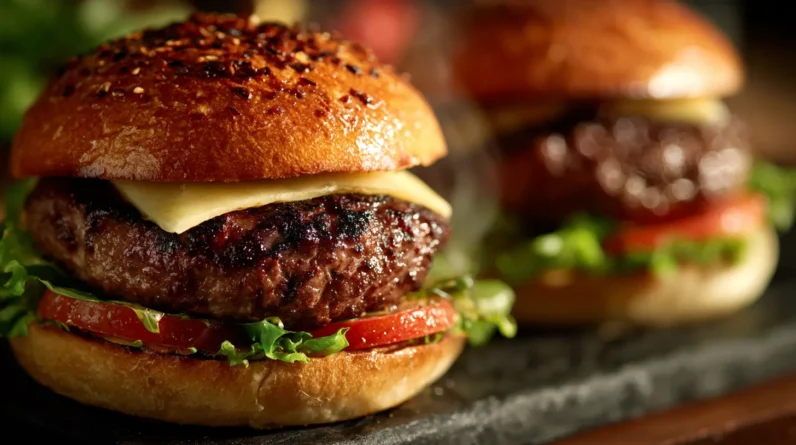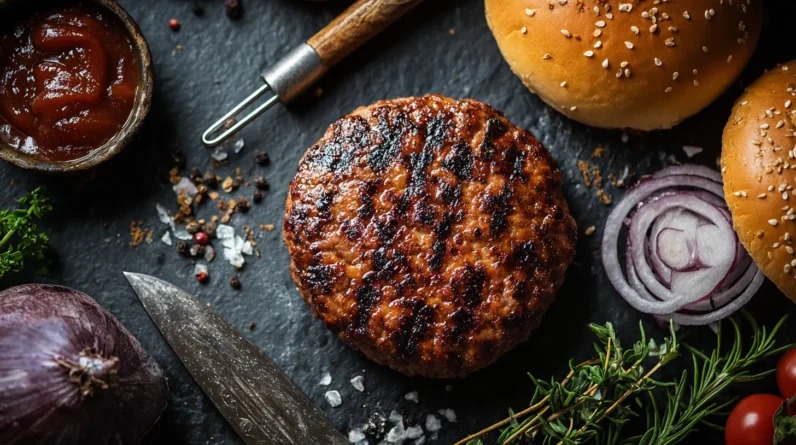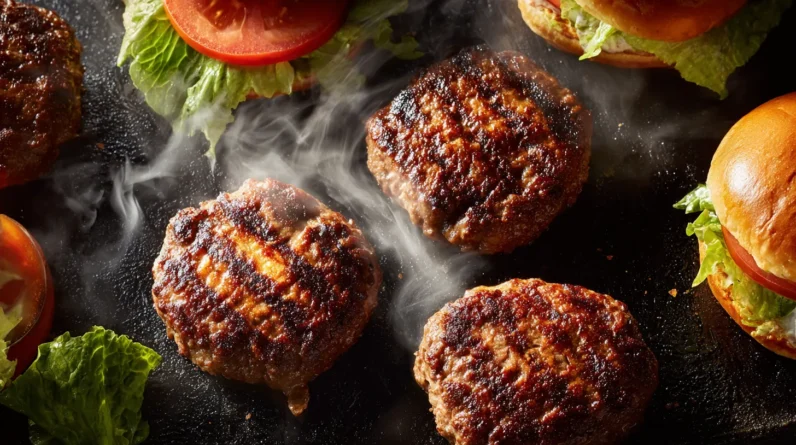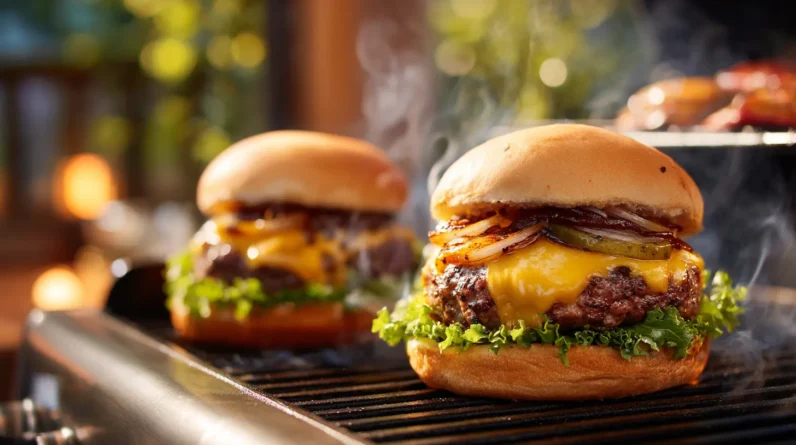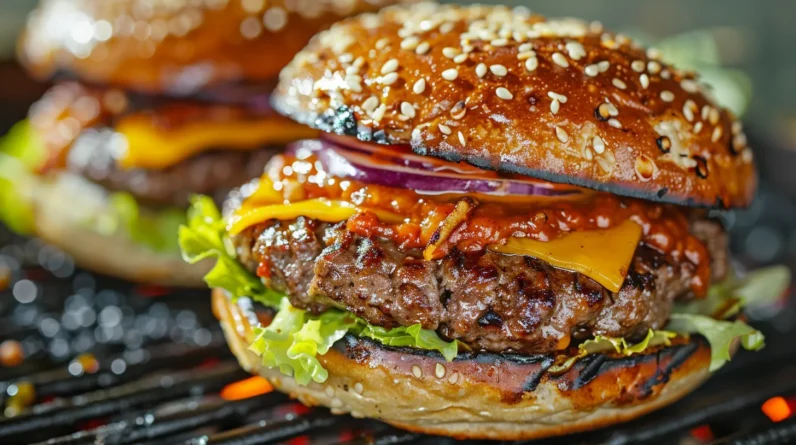
We’ve perfected techniques to elevate our beef burgers, from forming uniform patties with the right looseness to achieving perfectly cooked results using a two-stage method. We use kosher salt, freshly ground black pepper, and smoked paprika for added flavor. By following our simple yet effective methods, you’ll be able to cook burgers to the perfect doneness – and we’re just getting started on what makes a great burger.
Burger Patty Formation Techniques
As we explore the art of burger crafting, we’ll start by mastering burger patty formation techniques, which are crucial for achieving uniform cooking results and ideal flavor. We use a meat scale or portion ground beef into equal-sized balls for uniform patties. Shaping them slightly larger than the bun diameter compensates for shrinkage. Ideal patty thickness ranges from 1/2 inch to 3/4 inch. We form patties loosely, avoiding overworking, and use tools like ring molds for uniform shape. This guarantees consistent size, leading to predictable cooking times and better burger quality. We’ll shape and chill patties for superior results.
Seasoning and Flavor Enhancement
We’ll focus on seasoning and flavor enhancement, a critical step in crafting exceptional beef burgers. We use kosher salt for its coarse grain and flavor control. Freshly ground black pepper enhances rich, nutty undertones. Garlic and onion powder add depth and savoriness. Smoked paprika imparts a subtle smoky flavor. We season patties immediately before cooking, applying roughly ½ teaspoon per side for balanced flavor. This approach preserves juiciness and allows for liberal seasoning usage, maximizing taste. By combining these techniques, we can create complex, personalized flavor profiles that enhance the natural taste of the beef.
Cooking Methods and Temperature Control
When cooking beef burgers, mastering temperature control is crucial for achieving the perfect doneness, so we’re focusing on cooking methods that deliver consistent results. We use techniques like two-stage cooking, where we cook burgers away from heat until about 20°F below target temp, then sear on the hot side. Ideal grill surface temperatures range from 325°F to 450°F, and we utilize infrared thermometers for accurate checks. By maintaining precise temperatures and using methods like cast iron cooking, we can achieve ideal internal temperatures, ensuring perfectly cooked burgers every time, whether rare, medium, or well done.
Alternative Cooking Techniques
Alternative cooking techniques offer us a range of options for preparing beef burgers, because they provide unique benefits and flavor profiles that can’t be replicated with traditional grilling methods. We use broiling, air frying, braising, oven roasting, and griddle-smashing techniques to achieve distinct results. Broiling and griddle-smashing create crispy exteriors, while air frying and braising yield juicy interiors. Oven roasting cooks burgers evenly, albeit with a milder flavor. These methods allow us to control texture, moisture, and flavor, making them valuable additions to our burger-cooking repertoire. Each technique requires precise execution to produce ideal results.
Burger Assembly and Serving Suggestions
As we assemble our burgers, it’s crucial that we consider the placement of each component to guarantee a harmonious balance of texture, moisture, and flavor. We consider patty placement, sauce application, and topping layering.
| Component | Consideration | Benefit |
|---|---|---|
| Patty | Centered | Aesthetics |
| Sauce | Evenly spread | Moisture |
| Toppings | Layered | Texture |
| Cheese | Melted | Flavor |
We serve burgers immediately, with complementary condiments and classic sides, to guarantee ideal temperature and texture, mastering the art of burger assembly and serving.
Conclusion
We’ve explored advanced burger techniques, and now it’s time to fire up the grill. Like a master painter adding final brushstrokes, we’re putting the finishing touches on our beef burgers, ensuring they’re cooked to perfection and bursting with flavor, using precise temperature control and expert assembly techniques.


